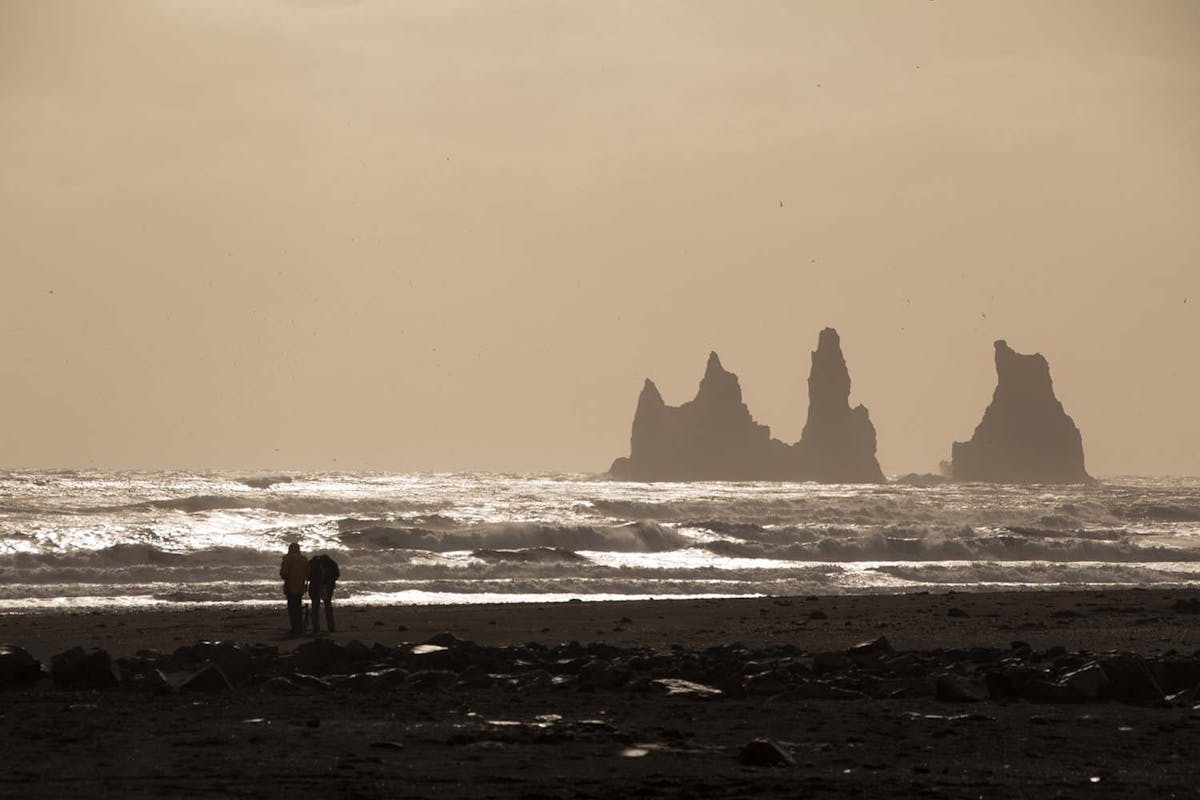Towards the East
The months had passed quickly. As mentioned in an earlier article, first we felt like we had recently arrived. After New Year’s, we felt as if the time was over already. Eventually, we had booked the flight home from Keflavík airport and we wanted to explore the east and south of Iceland in some days.
Fortunately, we knew what distances were realistic to drive, we had learned some Icelandic and felt comfortable with the people and the customs. On the way to the airport, we transformed into tourists once again. We set out in a rental car, driving east past the now familiar landscapes of the Mývatn and the Road 1 towards the town of Egilsstaðir.
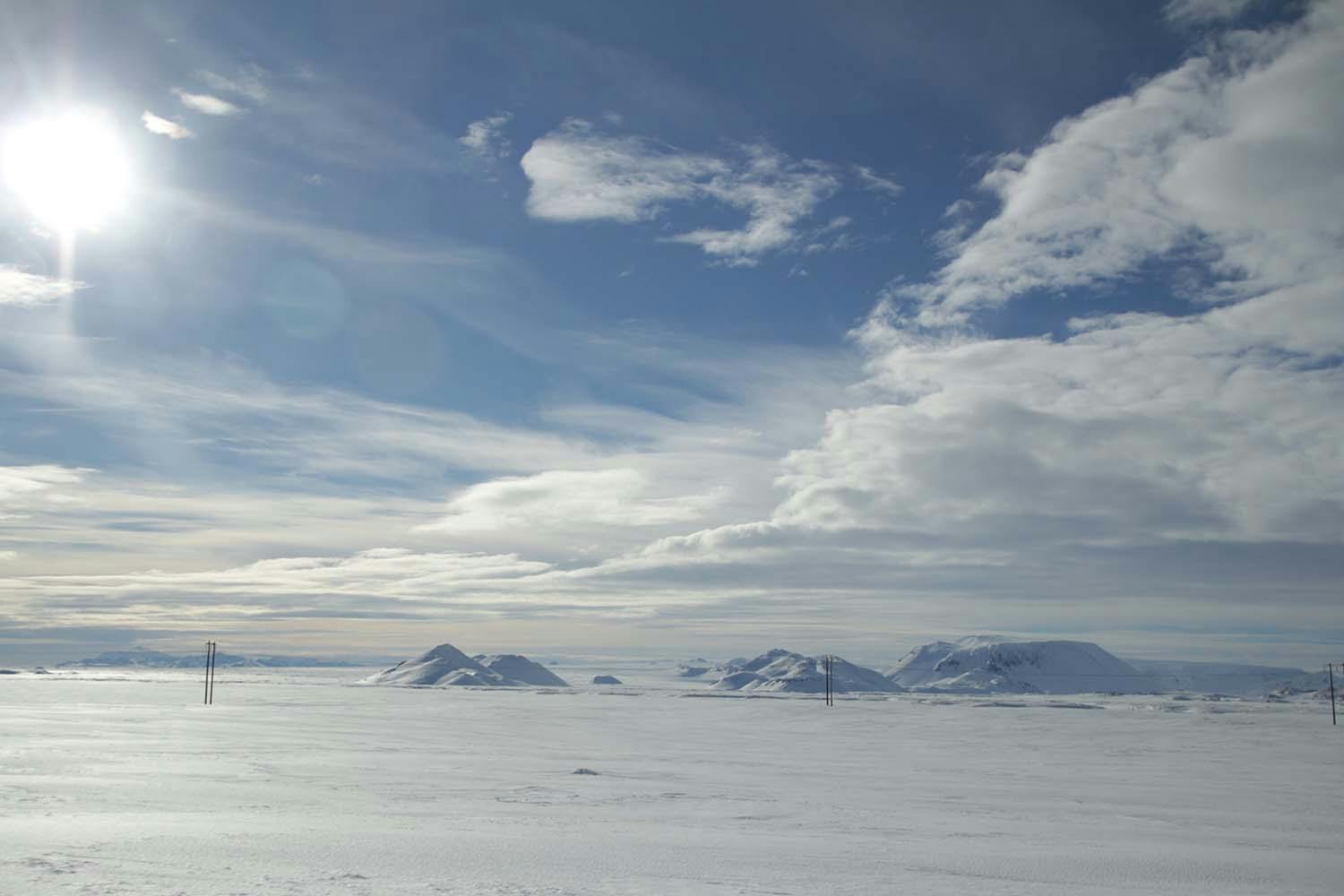
Between Mývatn and Egilsstaðir there are about 170 kilometers of nothing. There are no settlements, only some farms near the east. Driving east, there are the mountains of central Iceland to the right, a vast wilderness of ice and snow. The weather was fantastic, the sun gleaming over the winter desert. Only the power lines and towers kept at a regular pace next to the road. About halfway on the route to Egilsstaðir, a little road turns inland. Following it, we arrived at the Möðrudalur farm. There are some farm buildings and a little church, as well as newer café. We parked the car and were greeted by a woman who lives on Möðrudalur year-round.

She had just finished a cake and unlocked the café for us, all the while telling us about the history of the place (in a mix of English and Icelandic). Apparently, some generations ago, the forefather of her family fled from some kind of plague, stopping in the middle of nowhere. In the 1940s, the patriarch built the church. In recent years, the place has become a starting point for highland tours, including a camping site and said café. We had awesome hot cocoa and fresh cake, enjoying the look over the near mountains. Strengthened, we drove on to our Airbnb near Egilsstaðir.
Eastfjords
The next day, our ultimate goal was the town of Höfn. It’s about a 250 km drive. We started early and thought about going to the town of Seyðisfjörður, which where most of the ferries from the Faroe Islands arrive. Down in Egilsstaðir, the weather was cold and clear, it wasn’t too snowy. To get to Seyðisfjörður, you have to drive over a little mountain pass. We started up the hill and drove straight into the clouds, which meant the sight dropping down to less than 50 meters. With fog and snow, the road was suddenly very slippery. We scratched driving over the pass and turned around, not wanting to risk getting stuck.
Towards the south, the weather stayed stable and we continued into the east fjords, frequently stopping to take pictures. Every once in a while, you can turn off the road towards some abandoned farm or lighthouse. The houses, often made from wood, are slowly losing the battle against the elements. Storms raging in from the Arctic Sea, long winters and harsh winds take their toll. Rusty steel and concrete are left in ruins for tourists to discover.

Driving in the fjords is fantastic. The sharp mountains to one side, the sea to the other, one cannot help but feel small. The top of the fjord mountains are often jagged edges, fog swirling around them mysteriously. Roads are sometimes hit by avalanches or rock slides, submerged in floods and swept over by sandstorms. It’s a constant fight against nature. Then, the mountains are painted in black and white, lining up into the distance.
Around lunch, we arrived in Djúpivogur, a settlement smack in the middle of the fjords. We had heard about reindeer in these parts and we spotted a big herd on the edge of the town. After we got something to eat, we went to look for the herd, found them some distance the last houses and took some shaky pictures. A viewpoint on a little hill can be found with a fantastic view to the south, overlooking the fjords. Kids from the nearby school would spend their lunch break on the rocks and I thought that this is decidedly different from the secluded and secured schoolyards that I knew.
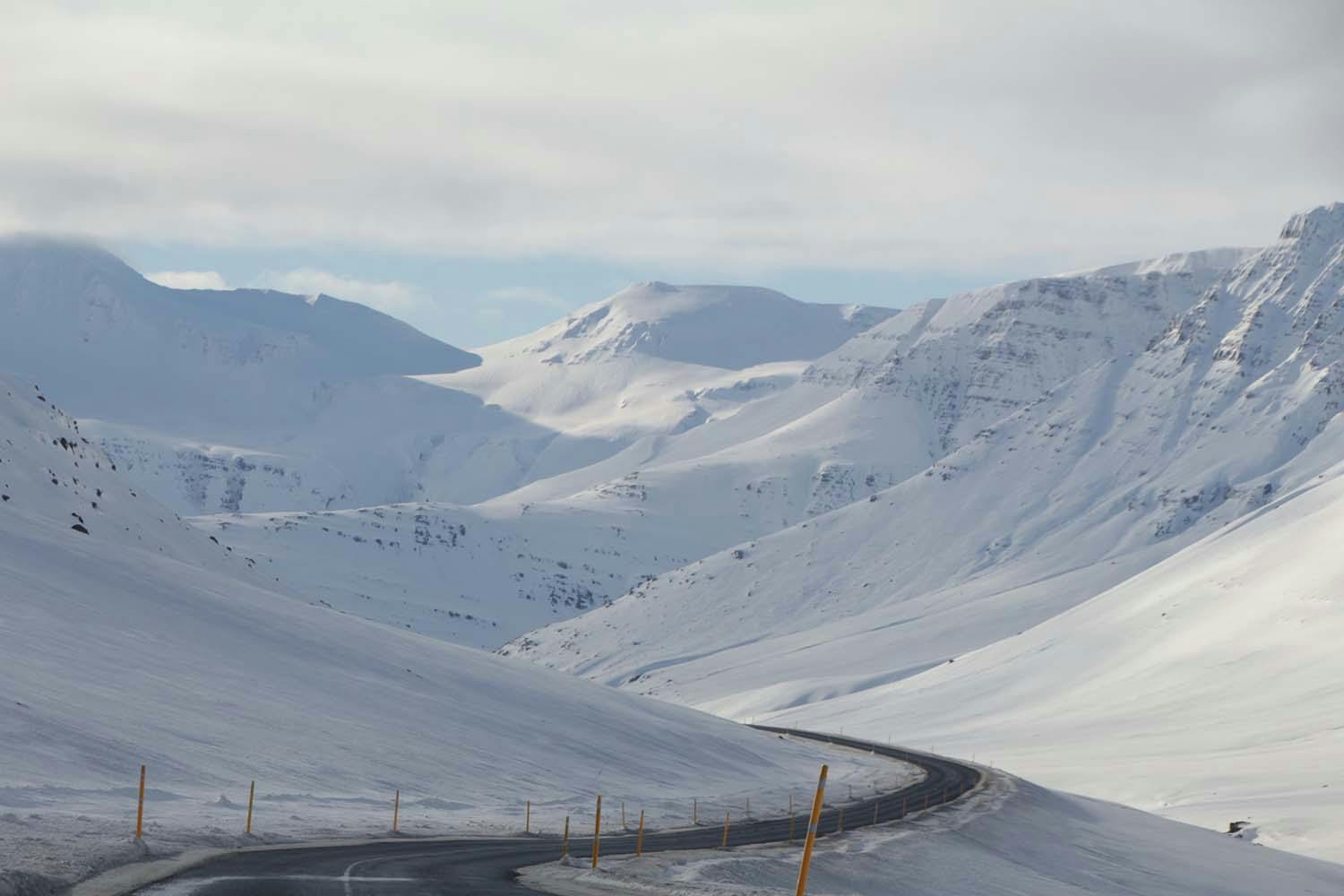
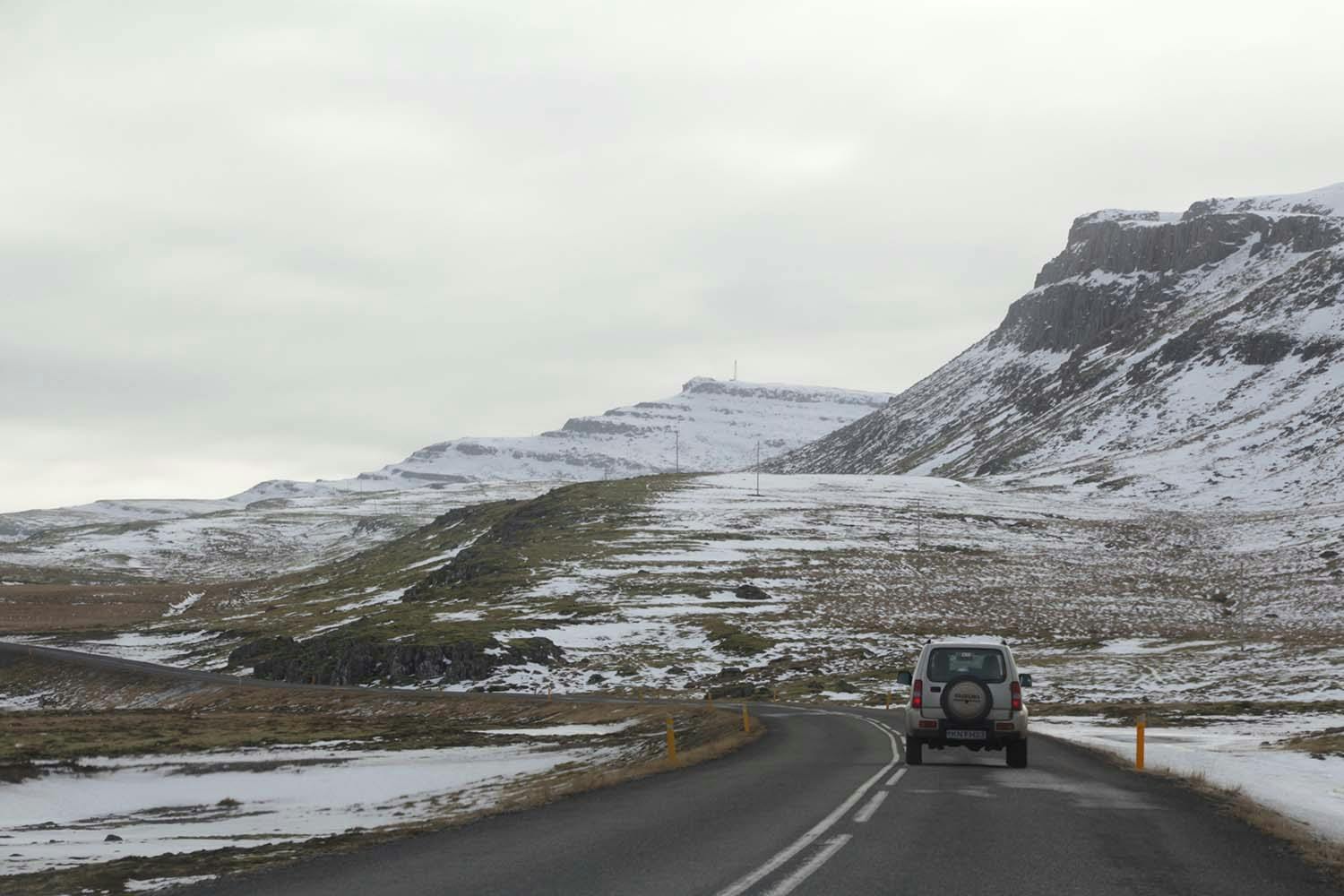
Right after Djúpivogur, reindeer appeared plenty on the side of the road and we could take more pictures. Reindeer aren’t bright animals, they tend to stand on roads to graze, but at least we saw some. Still some kilometers down the road, we had one of the magical Iceland moments. The sun was shining through some hazy clouds. There are some sandbanks off the coast and in this case, they kept the waves from the Atlantic out, rendering the waters next to the road perfectly still. Smaller rocks were rising from the water, mist covering the surface. We tried to stop to get some good pictures, but there were few opportunities. This is Iceland, too: moments of beauty that can only be enjoyed for a few minutes, instilling a deep sense of wonder and awe. Deep inside, you know that this moment is special, a constellation of weather, sun, light, and wind, shifting into a sight that will never return exactly this way.
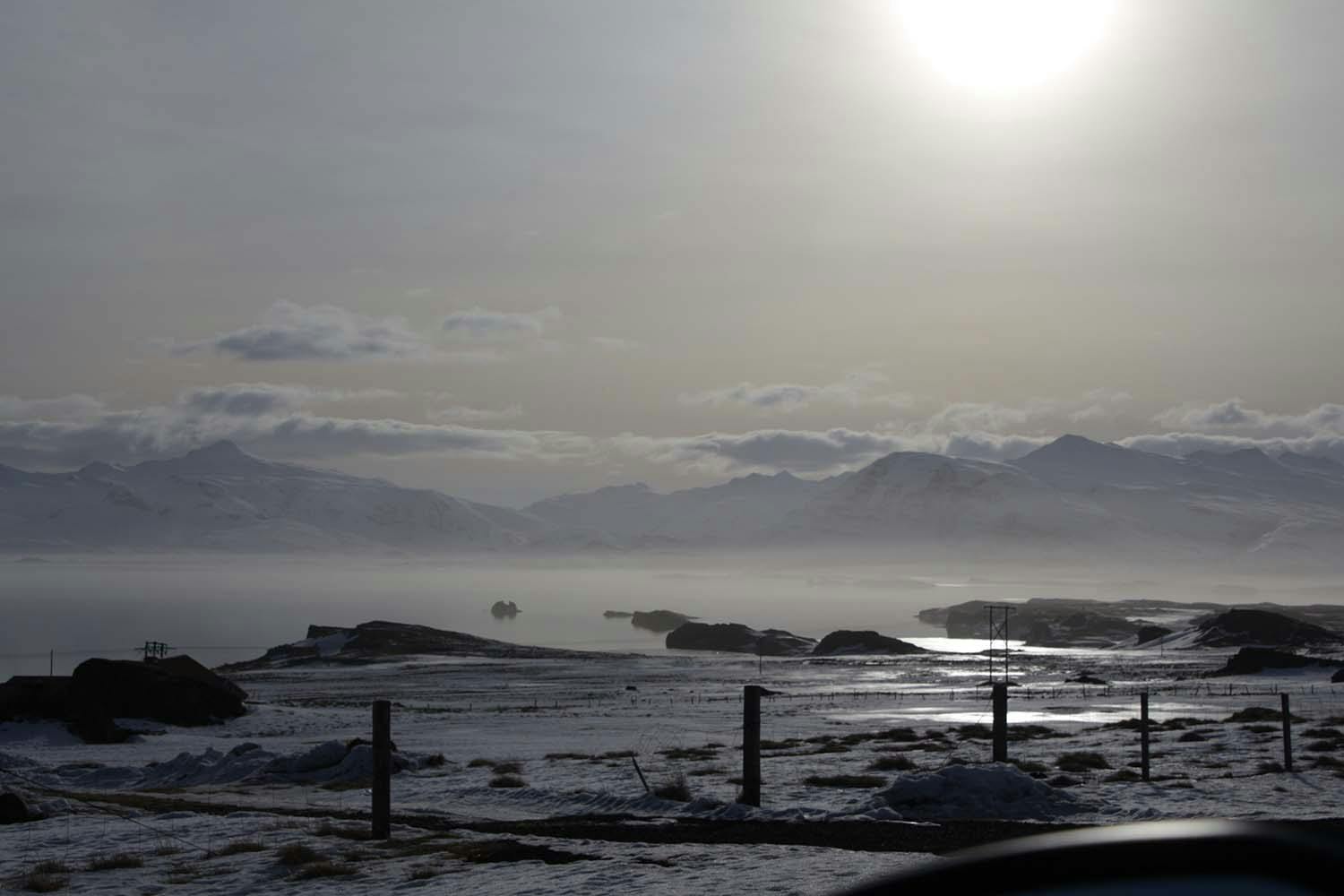
Before reaching Höfn on the southeast coast, we spotted the Vestrahorn mountain, a stronghold of rock on the edge of the sea. It could be part of any Lord of the Rings movies, presumably belonging to the evil landscape of Mordor. The range seems to permit any progress on road, but of course, Road 1 winds through, a gateway ending the distinct beauty of the east fjords. Höfn itself is nothing special. We drove to the hotel we had booked, waited some time for the innkeeper to show up, only to be told to drive to yet another hotel because they had to shift reservations around. It started to rain at night and we had some snacks in the hotel.
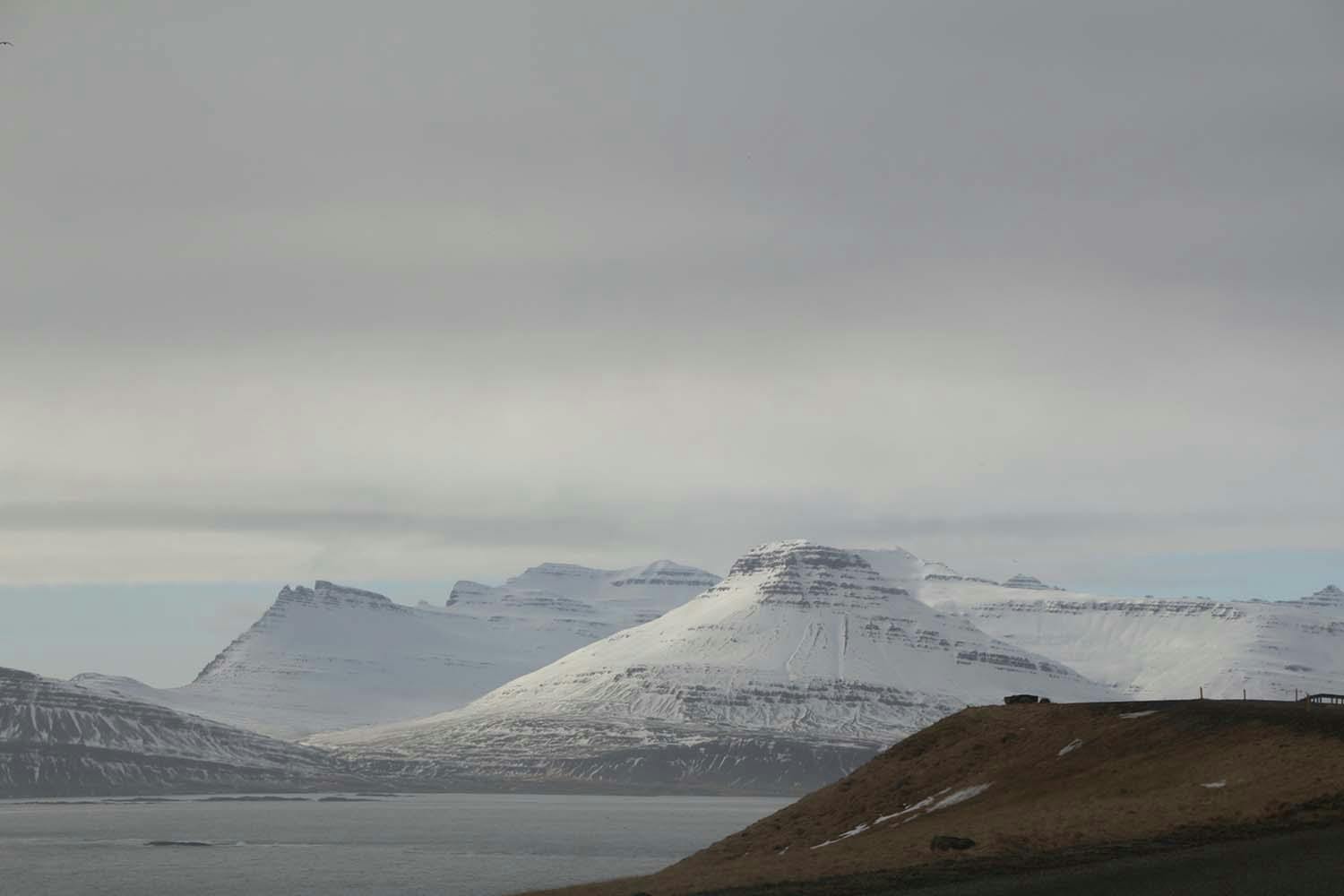
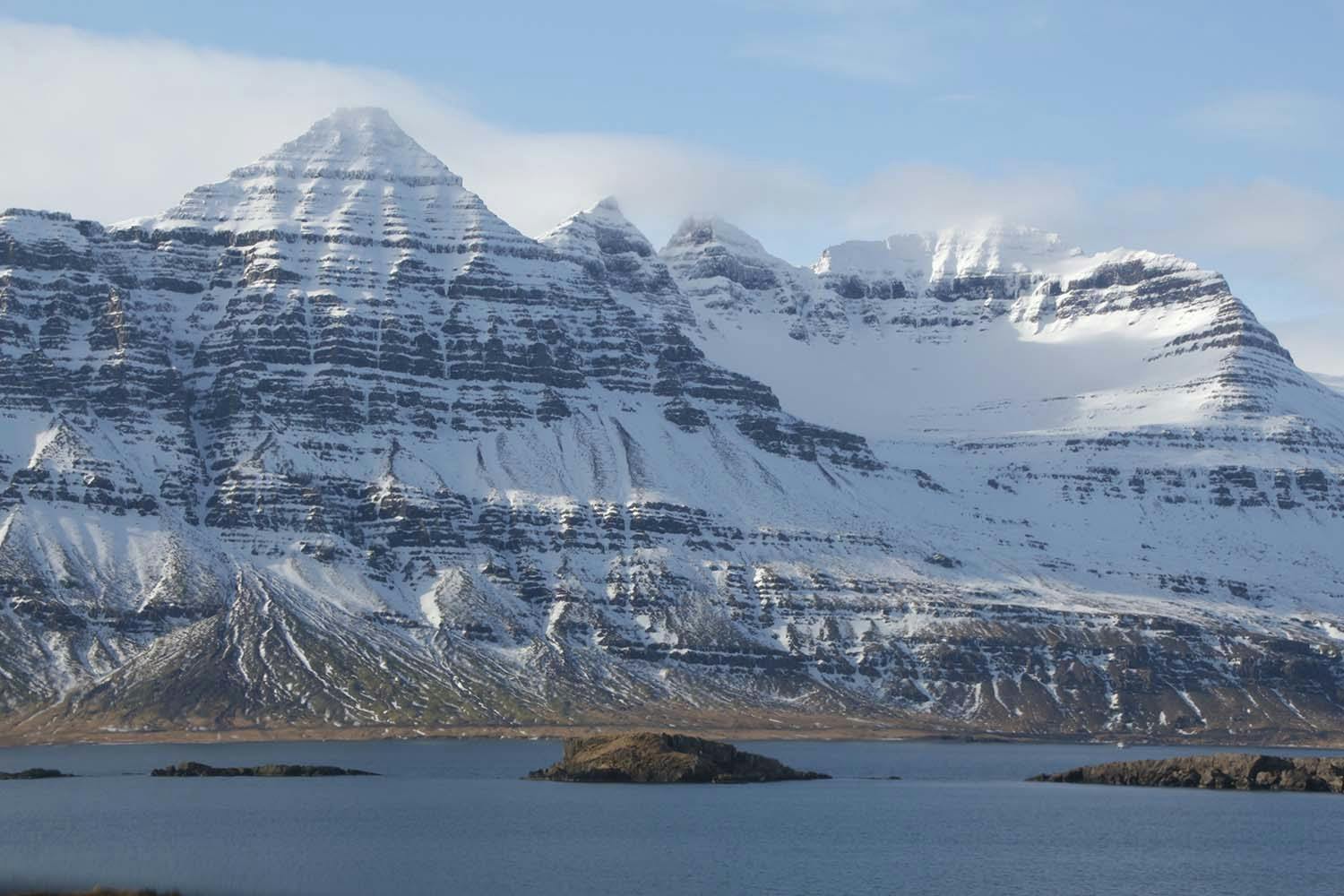
The south coast: Rain and ice, sun and wind
The next day, we had some cool sights on our plan, driving past Vík towards the next guesthouse. The day started off with heavy rain, the sort of rain that is both wet, windy and cold. We had to keep our windshield wipers almost at full speed. The first thing we had wanted to see was one the most famous places in the south: the glacial lagoon of Jökulsárlón. The large glacier of Vatnajökull ends near the sea here, breaking off into a small lake which then flows into the sea. The ice breaking off the glacier is ancient and remarkable blue, it seems to glow from the inside. The lagoon was full of tourists, it is often the farthest one drives in one day from Reykjavík. The distance is considerable, not something I’d recommend. The parking lot was frozen over solid and the constant rain had melted the upper layer, turning the whole affair into an exercise in not falling on your butt.
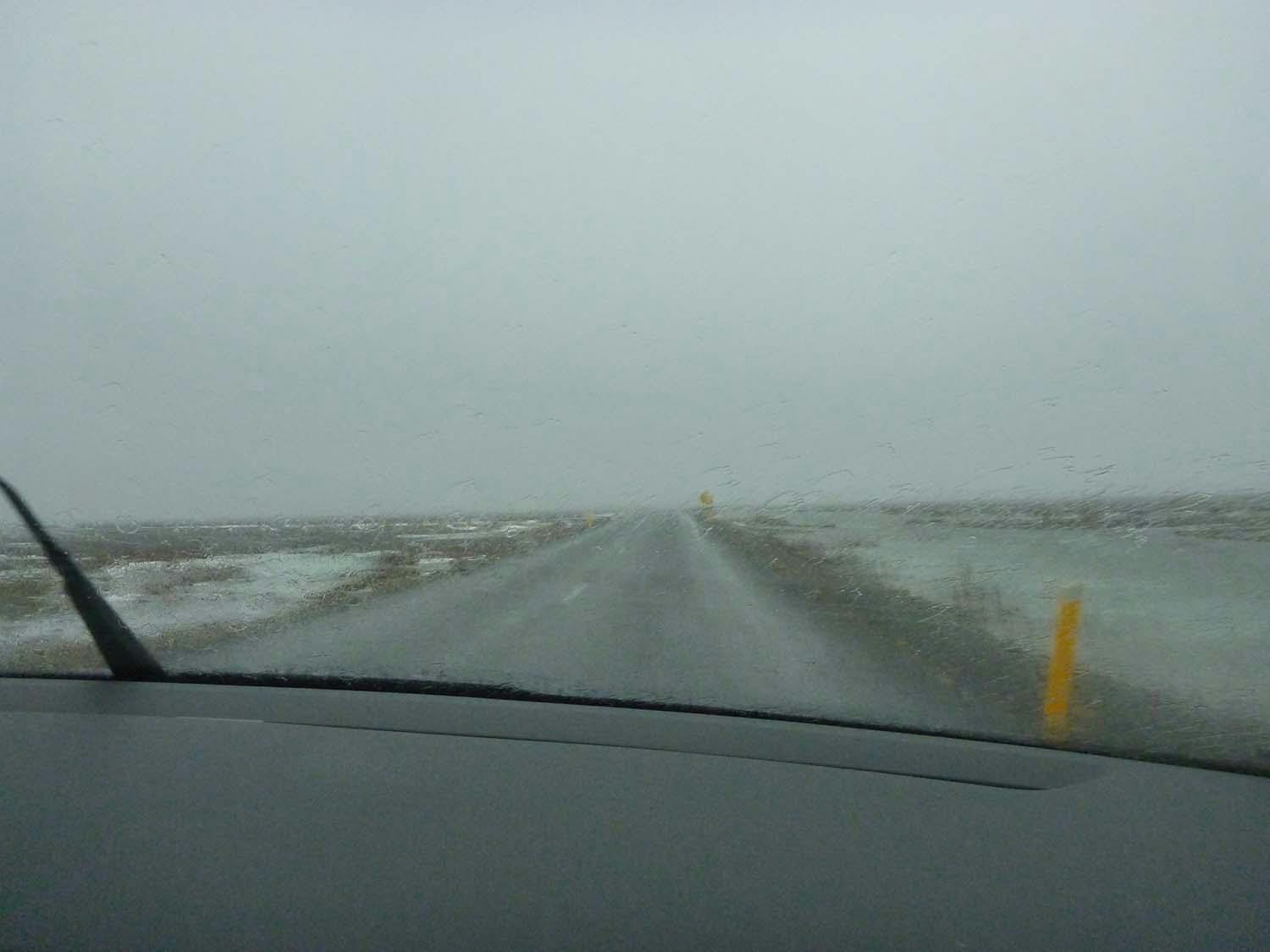
I bet the place is beautiful in more solid weather, and possibly with fewer tourists. On a day with heavy rain, low clouds and falling and sliding Asians everywhere, it was a bit hard to enjoy. We took some pictures of the seals and the floating icebergs and drove on.
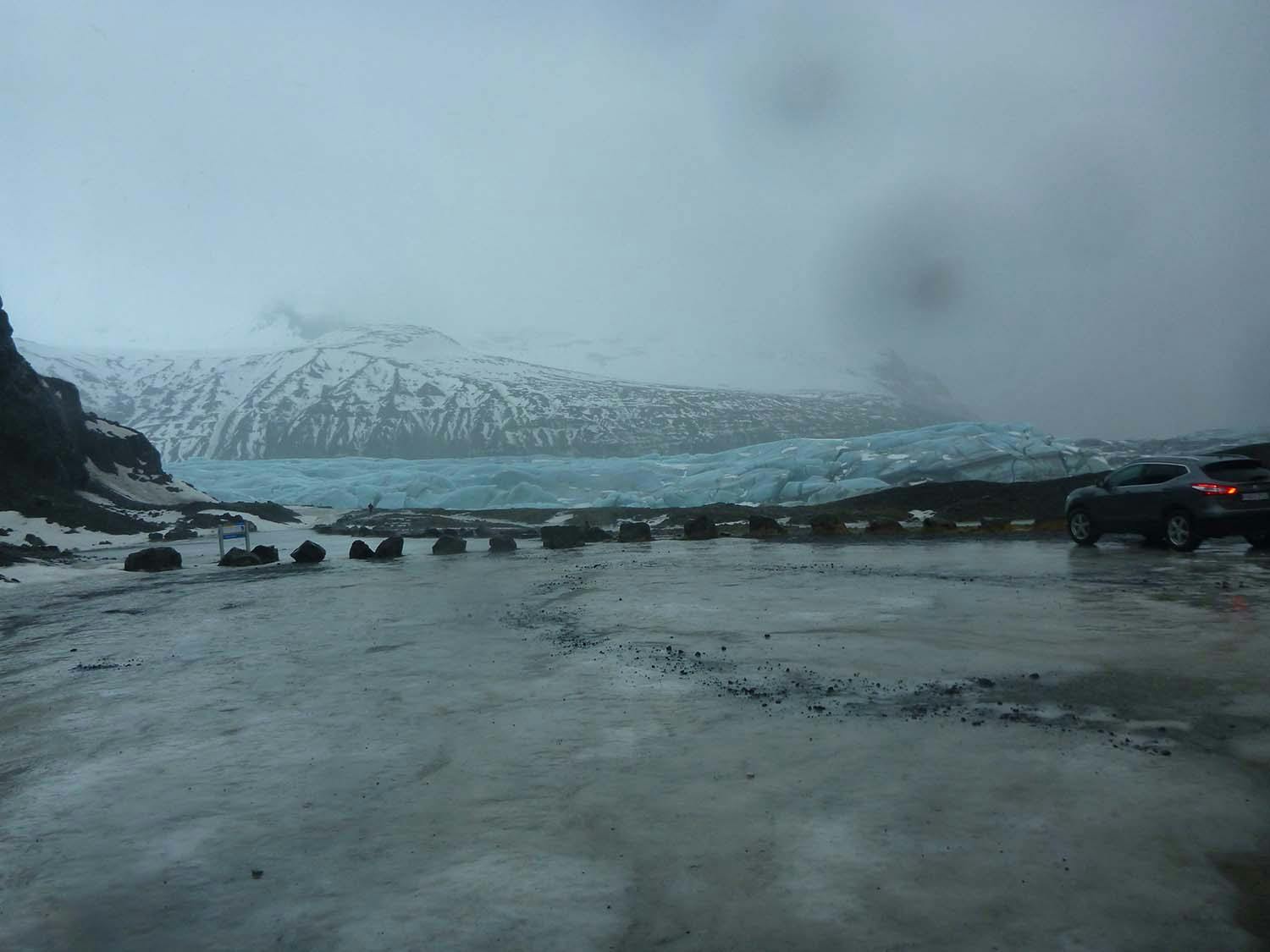
The next glacier that you can see and actually go to is the Svínafellsjökull. A jolty road ends up in another parking lot, this time with fewer tourists. The rain had united with a howling wind. I looked for a spot to park, while my girlfriend decided to go out and take a picture of the glacier. Less than 2 minutes later, she was soaked through to the bones, so we decided to stop for a way to get changed and have some hot coffee. Fortunately, around the corner, we found the visitor center of the Skaftafell National Park.
Our plan had been to hike to the Svartifoss waterfall, maybe 3 kilometers from the center. Due to the fact that even going from the car to the visitor center left us cold and shivering, we skipped that too. They had put up warning signs that all paths were likely to be covered in slippery ice. In the end, we put the National Park and its wonders on our “to do next time” list, looking for better weather in Vík.
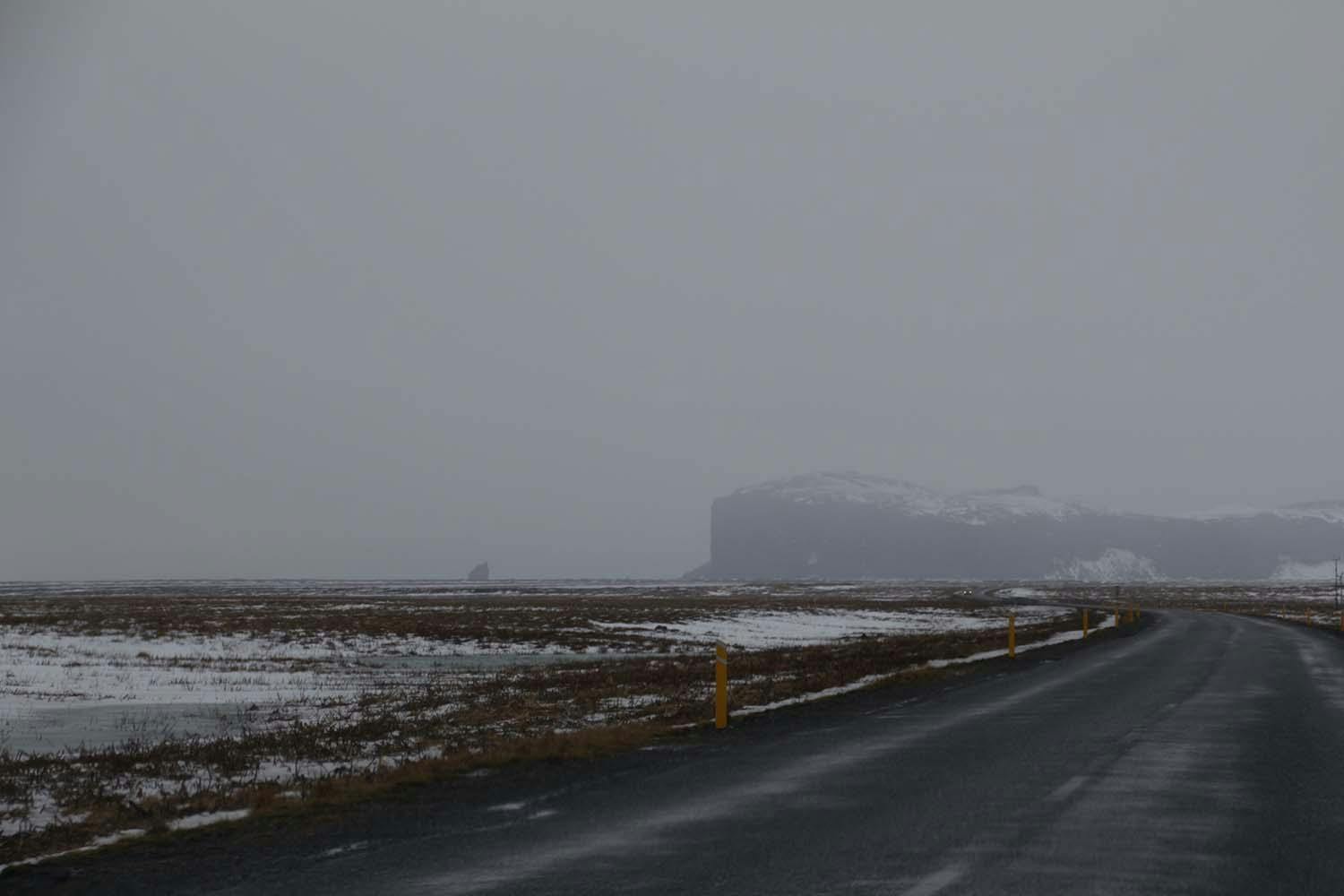
The road down to Vík is probably more interesting when your wipers aren’t going at full speed and the road is not constantly covered in spots of ice and puddles. Some kilometers before we reached Vík, the rain finally subsided. The wind and the dramatic clouds stayed. Vík sports a black beach, testament to volcanic events. Out in the sea, three high rock needles, called the Reynisdrangar, provide another “Lord of the Rings” moment. While it was windy, without the rain, everything was much more enjoyable. We passed Vík, driving out on the “bird rock formation” of Dyrhólaey. The wind increased to storm level, but from the higher point of this rock, we had a fantastic look at the black beach and the rock formations in the sea.
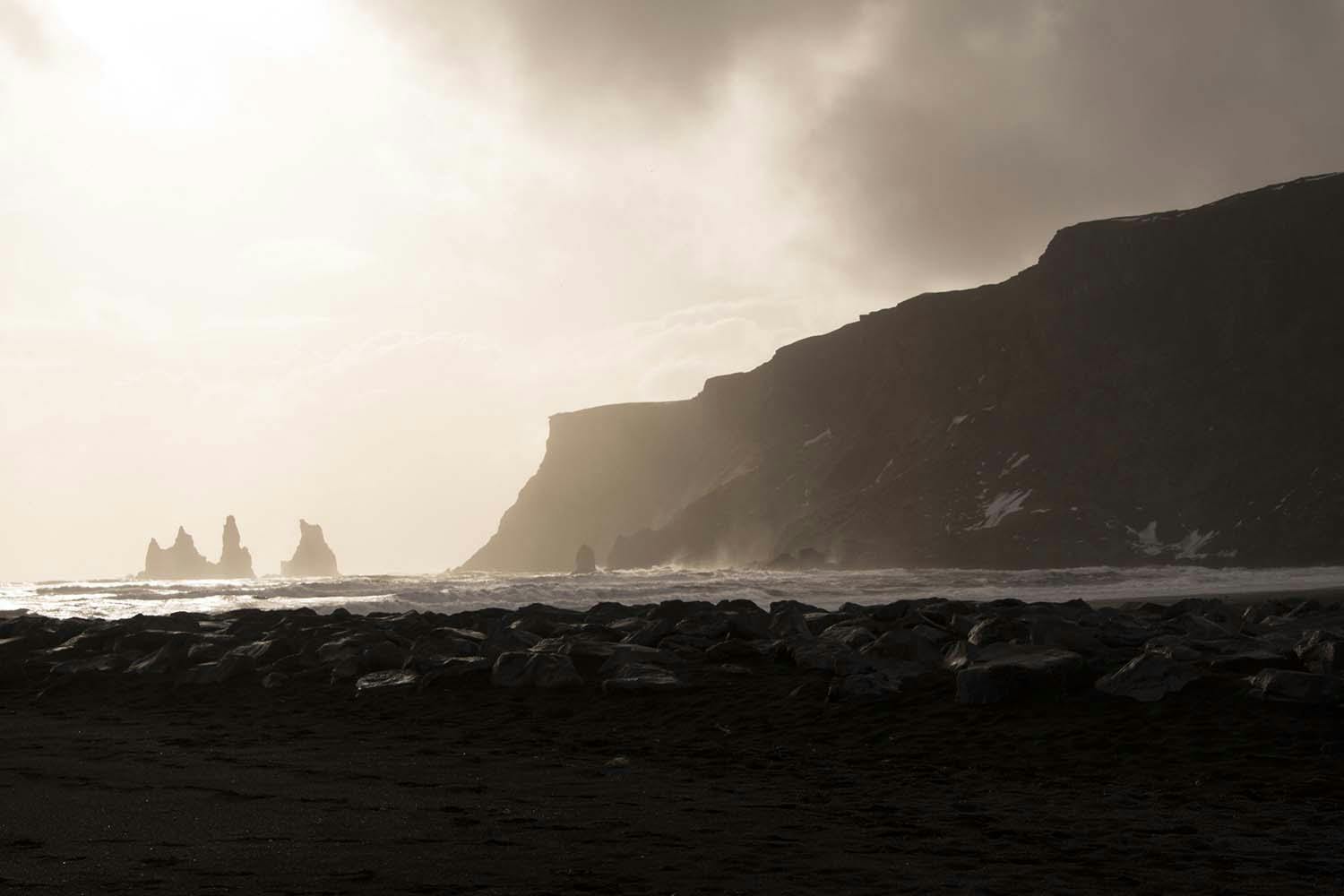
Apparently, some tourists think it wise to drive down to the beach, not thinking about waves as high as five meters crashing in from the sea. It happens multiple times per year that tourists were swept away and got injured or even killed. Icelandic authorities have put up signs all over the place, which are flat-out ignored by some people. Nature on the island is not something to be taken lightly: it’s windier, rainier, icier and also a lot less stable than what most people know from home. I can understand the desire to get close and take a good picture, but that should never be at the cost of life and limb.
We were close to our next guesthouse, where we checked in. For dinner, we drove down to the Skógafoss, a 60-meter high waterfall close to the ring road. It’s possible to climb up and get an amazing view over the coast. Right next to the fall is a nice hotel and bistro, where we had dinner looking at the waterfall. Near the waterfall is also the beach with the iconic airplane wreck of a DC 3 from the 1970s. It requires the tourist to drive off the road and over the beach for some kilometers. As the temperatures had been rising above 0°C for the last days, the snow on the beach had started to melt. As you know, water and sand make great mud. Combined with residue ice, driving in a rental car is not without dangers. The airplane also found its way onto the “to do in the summer” list.
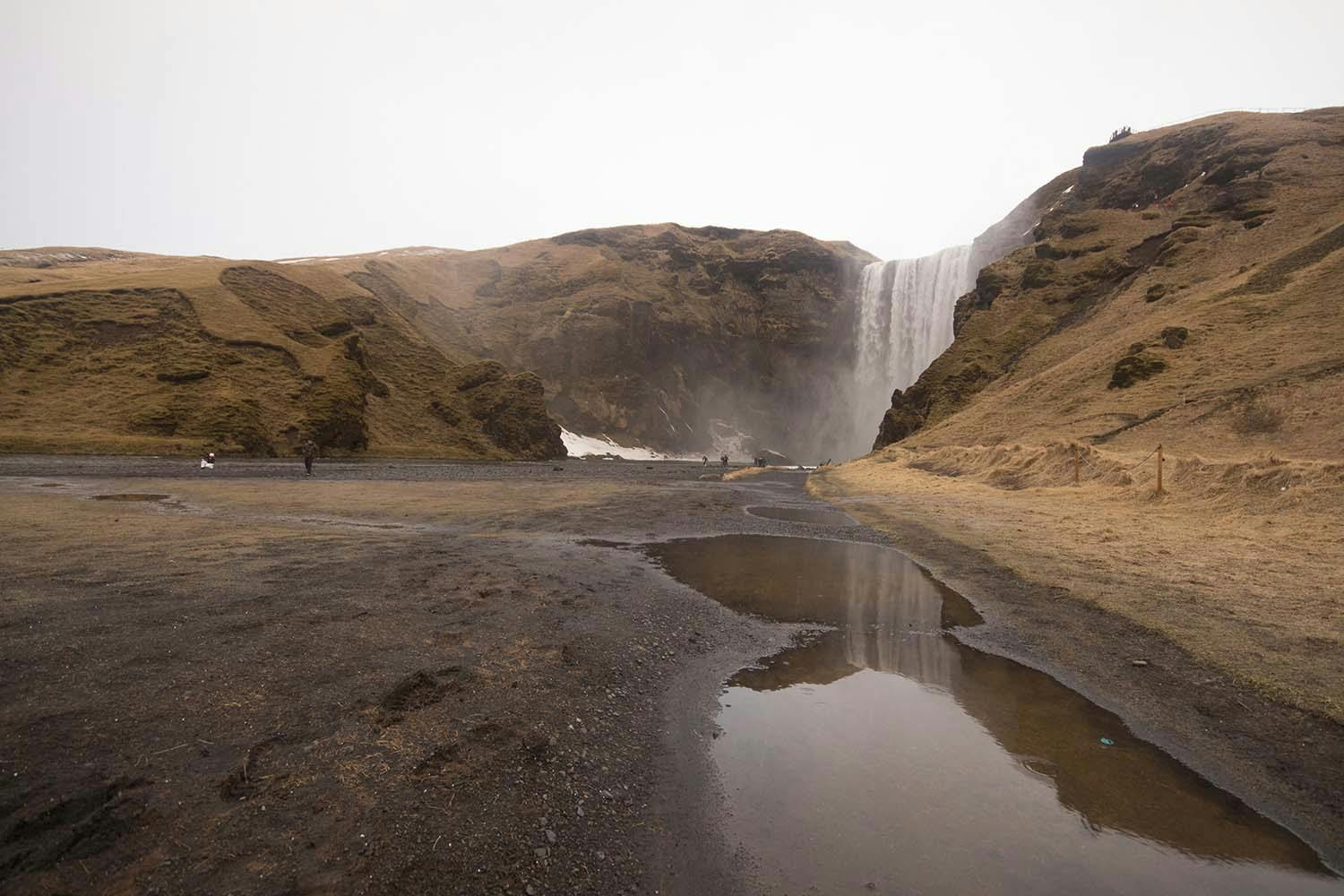
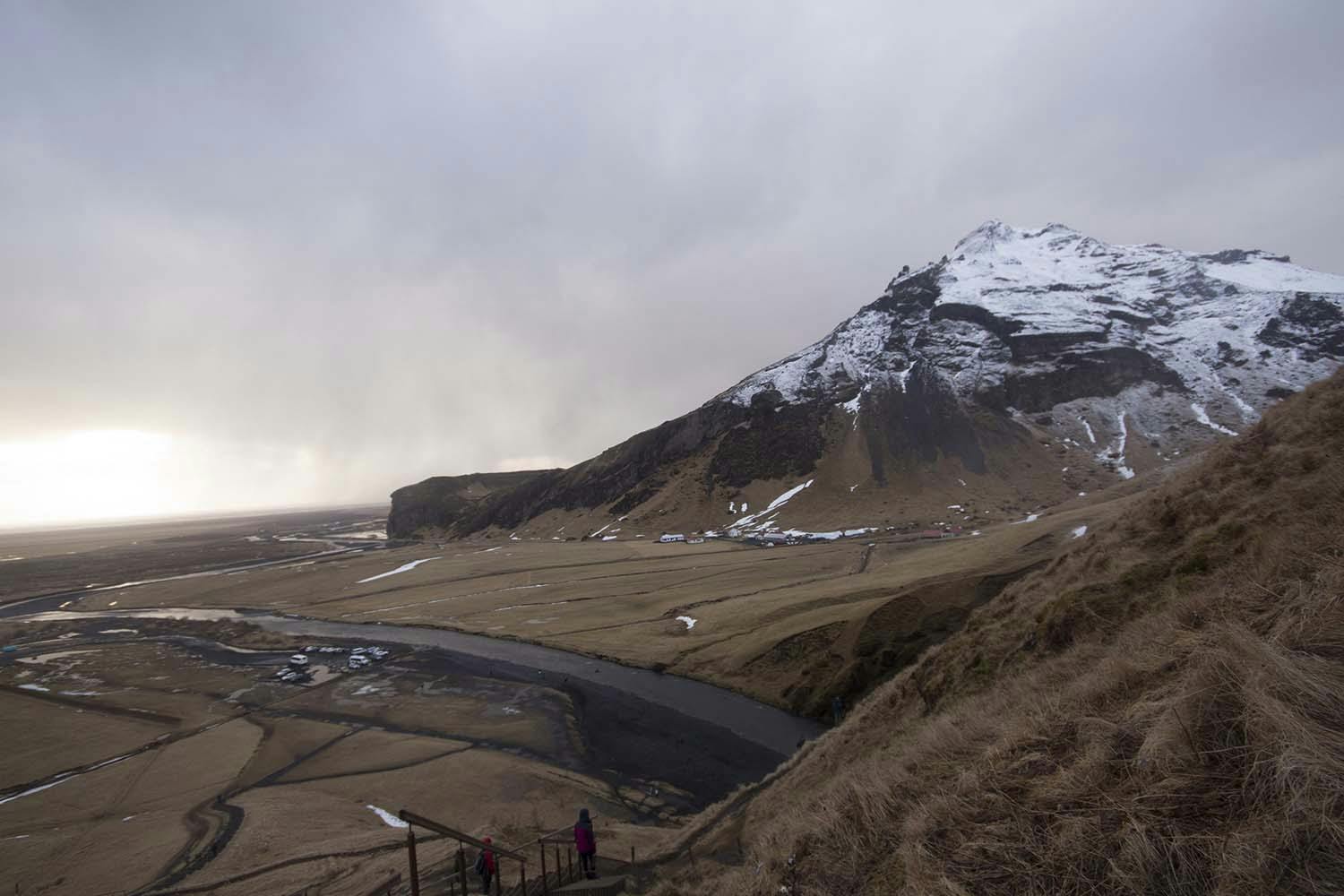
To Keflavík: last minute surprises
After a nice breakfast, we left for the last leg of our journey. Our flight was due early next morning and we had booked an Airbnb in Keflavík, just 5 minutes from the airport. Since we had seen the Skógafoss on the previous day, we stopped at the glacier of Sólheimajökull. It was a short hike from the parking lot, but the actual access onto the glacier is restricted to guided tours, so we admired it from the distance (and without rain).
Not terribly far away is a secluded swimming pool, the Seljavallalaug. It has been built right into the side of the mountain in the 1930s. Supposedly, the mountain supplies hot water for swimming. With an outside temperature of 4°C, we hiked there, meeting few others on the way. The pool itself is a funny place. Nested next to a small river, it sits at the foot of the Eyjafjallajökull, the glacier covering a volcano that erupted in 2011. The water was not warm, maybe 14°C. We decided to go in any way, continuing our tradition of bathing in remote locations. It wasn’t as cold as we had feared, but far from comfortable. After 5 minutes, we left shivering, but happy.
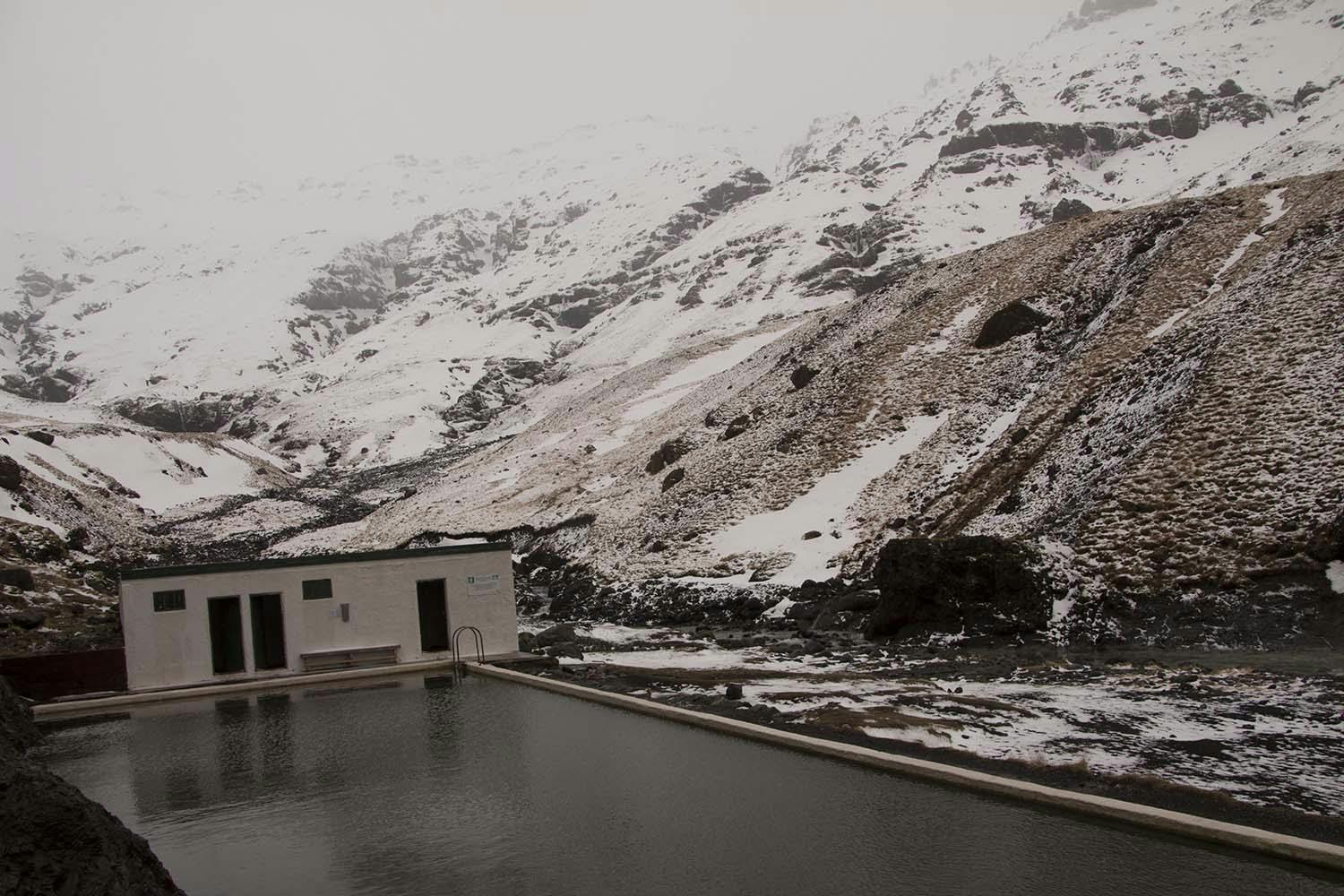
On the Road 1, there is also a cool museum about the eruption of the volcano and how it affected the farms. The museum, as well as the video documentary, were fascinating. The biggest problem arising from the eruption is not the lava, but the fact that it melts glacial snow rapidly. This created massive floods, which of course pose a threat to the fields and livestock on the coast. The ashes were blown into the atmosphere at first, but when the wind turned, they got swept back inland. From the mountains, there was a flood, from the sea came a storm of volcanic ash. They looked the livestock in the barns and the whole family had to be evacuated. In the middle of the day, they had to put on gas masks and were picked up by tank-like utility vehicles. It was black as the middle of the night, with sight less than 15 meters. After three days, the ash cloud has gone. The farm and its surroundings were covered in a knee-high layer of fine ash. The livestock survived and they cleared the ash away with help from volunteers.
Our next stop was the Seljalandsfoss, one of those waterfalls that you often see on pictures of Iceland. It is spectacular because there is a large cave behind it. It’s possible to go there most of the time, with all paths covered in ice, it’s not advisable. That’s the reason all paths are chained off and warning signs are set up, which doesn’t seem to register with some people. I don’t think it’s a great idea to climb over icy rock right next to a waterfall with your DSLR camera. Please don’t do this if you visit Iceland.
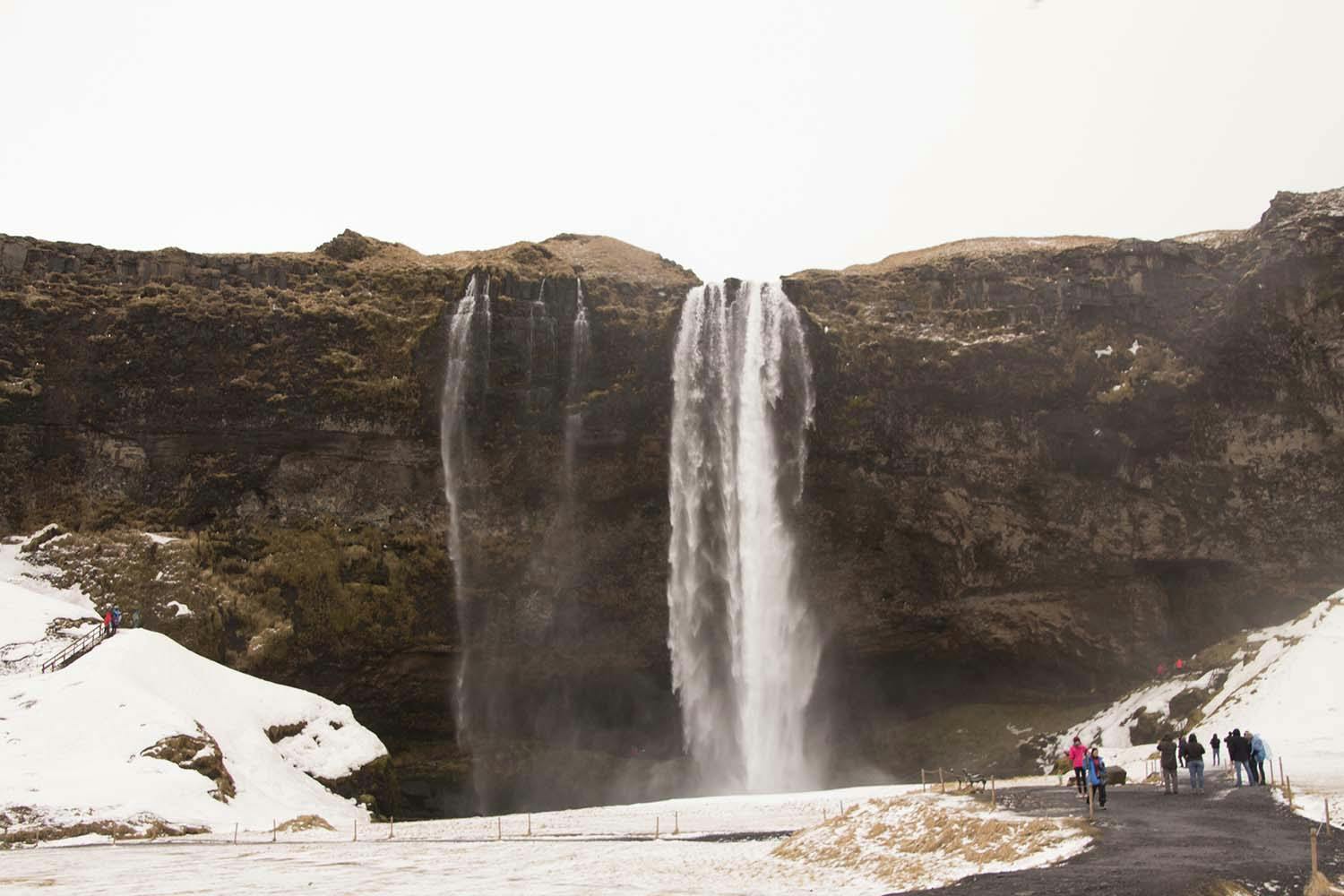
There are more waterfalls next to the big one, of them hiding in a rock chasm. You have to walk through the shallow river into the crevice to be able to see the waterfall. Green moss is everywhere. With places like this, it’s no wonder that belief in elves and mythical creatures is widespread in this country.
We stopped for coffee in Selfoss. We had been in the town in April of the previous year, but this time we didn’t drive back to Reykjavík on Road 1, instead of turning south towards the Reykjanes peninsula.
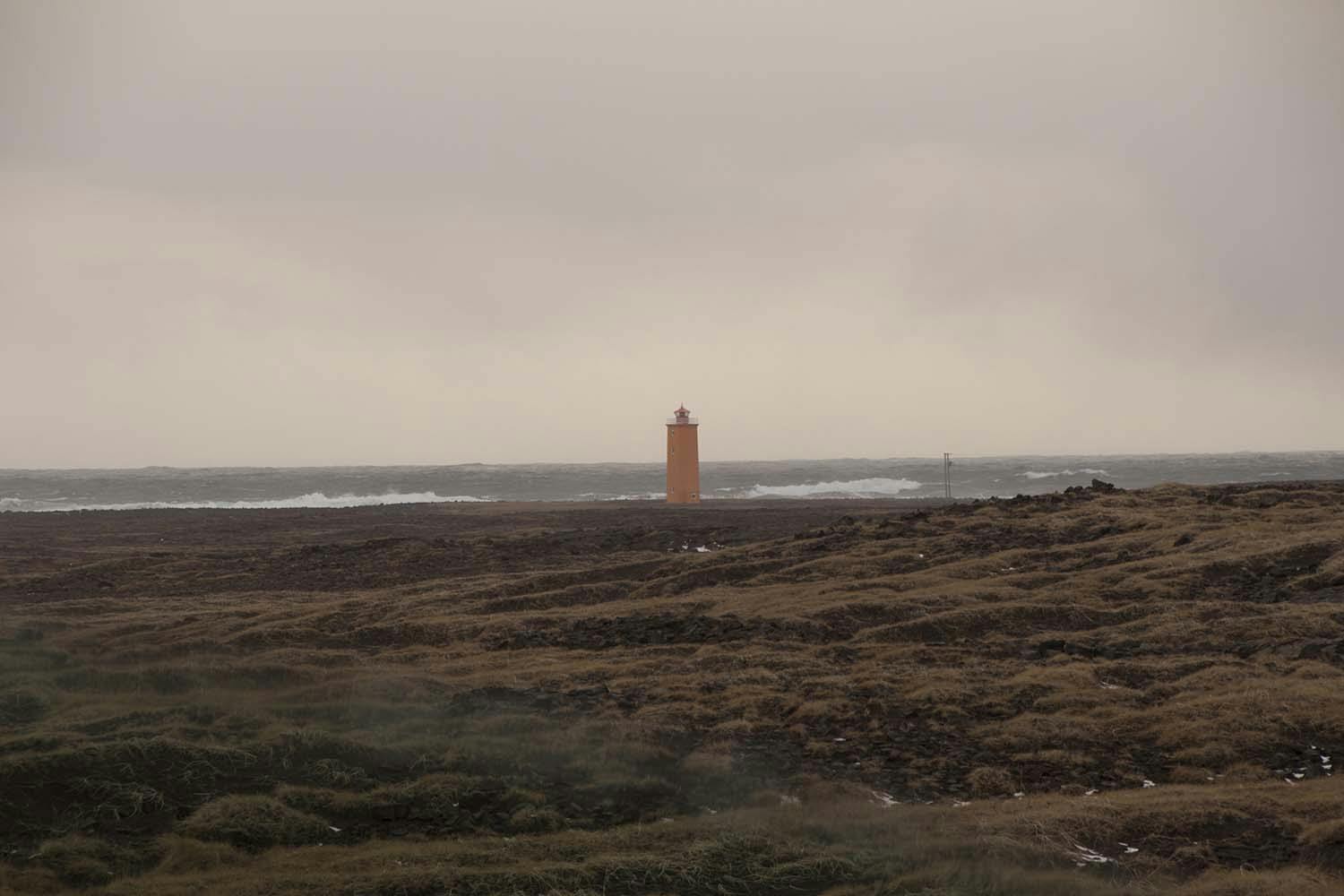
Just a few minutes away from the popular routes, we were alone on the road. Reykjanes surprised us with its variety of water. The wind was driving high waves onto the rocks, sending spray inland, rain showers were falling and steam emanated from the rocks. The sun painted rainbows in the mist and shimmered in thousands of puddles in the barren landscape. Behind Grindavík, there is a larger power plant that looks like something out a science fiction movie. Settlements are few and it feels once again like you are on the edge of the world. However, from the power plant, we had to drive only a few minutes to be back at the airport and the towns of Keflavík and Reykjanesbær. We headed to our Airbnb, which was in a nice house on the edge of the town.
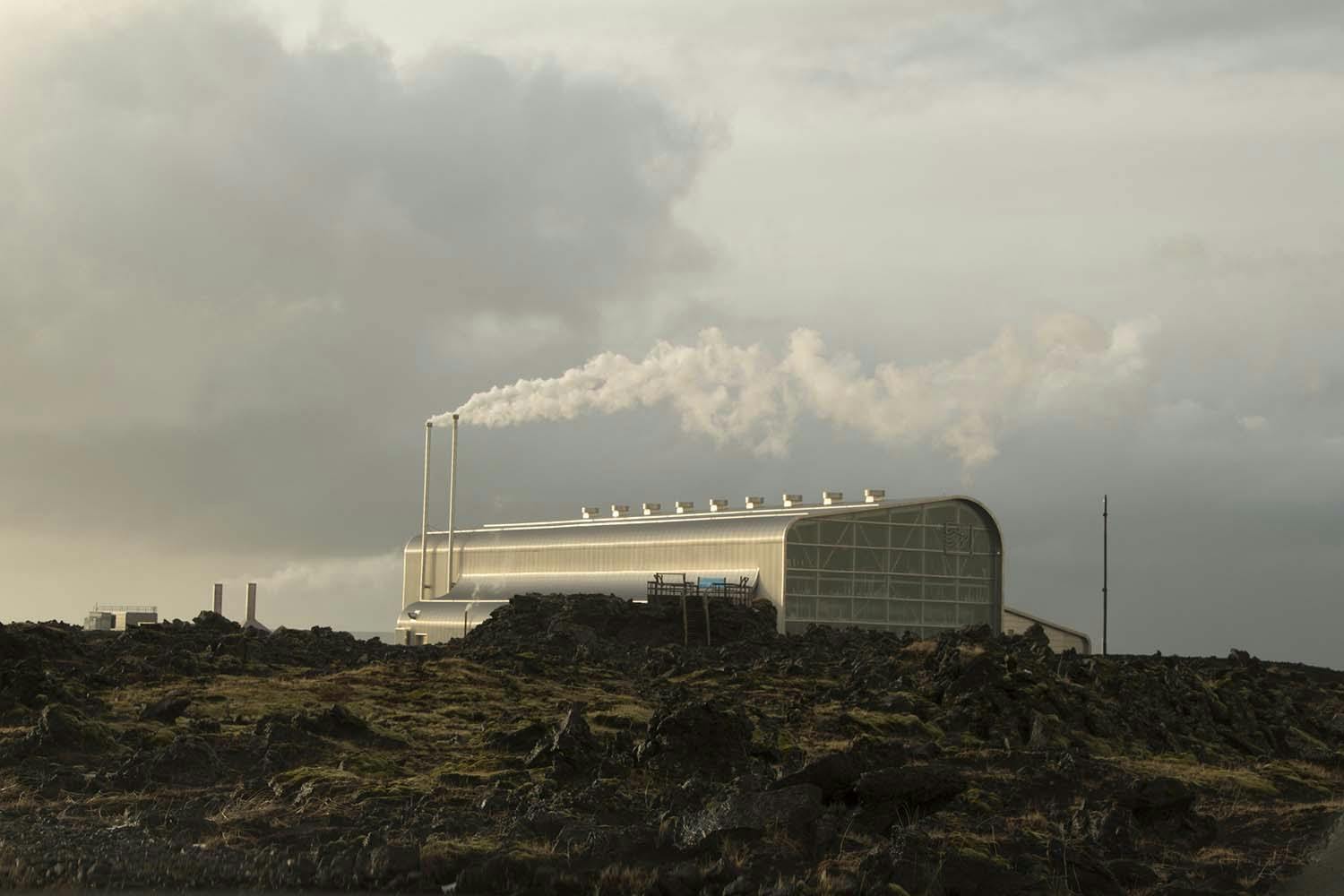
To finish off our day and our journey, we drove north to the village of Garður. Like every “proper” Icelandic settlement, it had a church, a school, and a hot tub. We stayed in the hot water for a long time, listening to the now familiar Icelandic and enjoying the evening.
Our adventure in the north had eventually come to an end.
